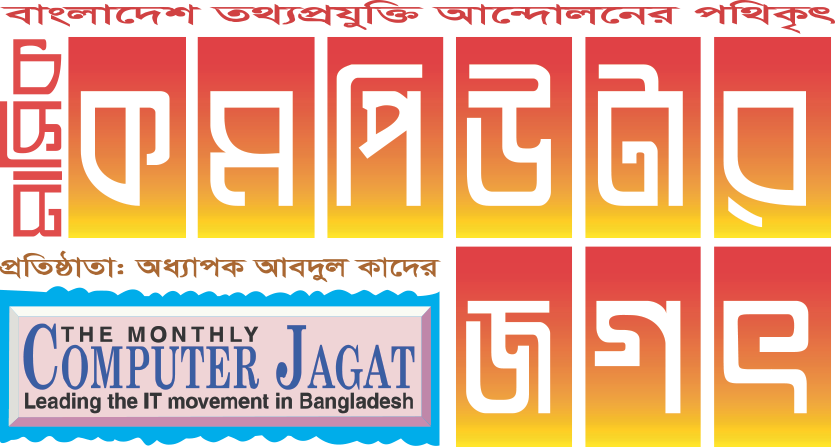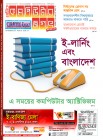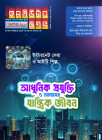হোম > Cyber Crime against Women: Challenges and Counter Measures
লেখক পরিচিতি
লেখকের নাম:
মোহাম্মদ জাবেদ মোর্শেদ চৌধুরী
মোট লেখা:৫১
লেখা সম্পর্কিত
পাবলিশ:
২০১৩ - সেপ্টেম্বর
তথ্যসূত্র:
কমপিউটার জগৎ
লেখার ধরণ:
সাইবার সন্ত্রাস
তথ্যসূত্র:
ইংরেজি সেকশন
ভাষা:
বাংলা
স্বত্ত্ব:
কমপিউটার জগৎ
Cyber Crime against Women: Challenges and Counter Measures
Cyber crime is a global phenomenon and women are the soft targets of this new form of crime. Cyber crimes pose a big threat for modern women. Increased access to digital devices is making technology an important resource for victims of violence. However, if not understood and used strategically, technology may increase their danger. One study says 95% of aggressive behavior, harassment; abusive language and denigrating images in online spaces are aimed at women and come from partners or former male partners.
Unfortunately, most victims of abuse do not know how to navigate safely technology resources to access help without increasing their risk of further abuse. Though ICT is the means to carry out these kinds of violent acts, on the other hand proper and intelligent use of ICT can prevent this kind of cyber crime against women. There are many initiatives where many survivors of abuse report using a wide array of technology resources to help them have a greater sense of security, increase supports, and decrease isolation.
ICT is becoming an integral part of our day to day life. It has eased our life by easy access to information, healthcare, financial services etc. Social networking sites have become an important means of communication and maintaining social relationship. Like men, women are also engaging themselves in cyberspaces. They also maintain their own virtual world.
As the people are moving towards the online world, so does the criminal. All recent statistics shows that cyber crimes are on the rise. These crimes includes, hacking of websites, illegal financial transactions, copy right violation, identify theft and last but not the least violence of privacy. There are now many cyber crimes which are specially targeted for women such as harassment via e-mail, cyber defamation, cyber bullying, pornography and cyber-stalking etc. These kinds of cyber victimization remain underexplored barrier to their online participation.
Another area of concern that needs to be explored is the evolving culture of online gaming among the youth. Several online games feature very disturbing concepts about women. In strip poker, a player wins if he is able to completely undress the woman. This is one of many such games. For example, Grand Theft Auto is a video game that allows a player to earn additional points for raping or killing a prostitute. Many other games feature highly sexualised images of women, such as enlarged breasts and hips, thin waistlines, long curled lashes and pouting lips that convey stereotypical representations of women as sex objects.
This may not have direct bearing to real women, but what becomes of the player constantly exposed to these ideas and these forms of violence? This is something that may warrant further social and psychological studies that examine this phenomenon.
How technology is changing sexual harassment?
Online harassment or cyber stalking is the use of technology to follow and harass someone – often to the extent that the person fears for their safety. Cyber stalking includes (repeatedly) sending threats or false accusations via email or mobile phone, making threatening or false posts on websites, stealing a person’s identity or data or spying and monitoring a person’s computer and internet use. Sometimes the threats can escalate into physical spaces.
* Persistent mobile calls from strangers: In a survey carried out for APC in Pakistan in 2009 approximately 94% of women respondents had received harassing calls and messages from men they did not know. Repeated calls from strangers were so common that most women had even stopped being bothered by them. One in 10 women received threats from strangers and in one case the woman received death threats and
decided to leave Pakistan.
* Manipulating photographic images In India, Delhi police note that of all cybercrime cases reported almost half are filed by women who discover their faces morphed onto pornographic images and posted online, usually accompanied by a personal phone number and an invitation for strangers to call (Weiting).
* Fraudulent postings and advertisements False postings to popular websites have led to violent attacks and harassment of women in the USA. A woman was raped by a stranger who said he was answering her Craigslist ad. The woman’s ex-boyfriend had pretended to be her in the ad saying she was looking for a man to fulfil her violent rape fantasy. The ex-boyfriend and the man who answered the ad were charged.
Using ICTs for recognition
Participatory video production brings rarely-heard voices and images into the civic arena. Teenagers in rural South Africa have learned how to use computers to make ‘digital stories’ and talk about issues in their communities and the roles and rights of men and women. One girl Tokozile profiled the story of a close friend whose boyfriend had raped her. Her friend who gave Tokozile permission to use her story had never reported the incident. The digital story technique gives people a chance to talk about abuse or abusive attitudes to help someone who has been through the same thing.
Following the making of the story, Tokozile’s friend has become a peer educator raising awareness amongst teenagers around rape. Mobilizing national advocacy A number of women’s organizations in Uganda have also used the internet in combination with television, radio, newspapers and other print media to highlight rape, victimization and harassment carried out by the security agencies.
In Brazil Bem Queerer Mulher9 (Beloved Woman) is an anti-violence campaign from UNIFEM. Beloved Woman is raising funds to provide services and is supported by a number of famous people including a popular soap opera star whose character is abused by her intimate partner. The site includes Violence against Women (VAW) statistics and helpline information as well as videos and campaign spots. Online Brazilian campaigns are using Twitter extensively to spread their message
Unfortunately, most victims of abuse do not know how to navigate safely technology resources to access help without increasing their risk of further abuse. Though ICT is the means to carry out these kinds of violent acts, on the other hand proper and intelligent use of ICT can prevent this kind of cyber crime against women. There are many initiatives where many survivors of abuse report using a wide array of technology resources to help them have a greater sense of security, increase supports, and decrease isolation.
ICT is becoming an integral part of our day to day life. It has eased our life by easy access to information, healthcare, financial services etc. Social networking sites have become an important means of communication and maintaining social relationship. Like men, women are also engaging themselves in cyberspaces. They also maintain their own virtual world.
As the people are moving towards the online world, so does the criminal. All recent statistics shows that cyber crimes are on the rise. These crimes includes, hacking of websites, illegal financial transactions, copy right violation, identify theft and last but not the least violence of privacy. There are now many cyber crimes which are specially targeted for women such as harassment via e-mail, cyber defamation, cyber bullying, pornography and cyber-stalking etc. These kinds of cyber victimization remain underexplored barrier to their online participation.
Another area of concern that needs to be explored is the evolving culture of online gaming among the youth. Several online games feature very disturbing concepts about women. In strip poker, a player wins if he is able to completely undress the woman. This is one of many such games. For example, Grand Theft Auto is a video game that allows a player to earn additional points for raping or killing a prostitute. Many other games feature highly sexualised images of women, such as enlarged breasts and hips, thin waistlines, long curled lashes and pouting lips that convey stereotypical representations of women as sex objects.
This may not have direct bearing to real women, but what becomes of the player constantly exposed to these ideas and these forms of violence? This is something that may warrant further social and psychological studies that examine this phenomenon.
How technology is changing sexual harassment?
Online harassment or cyber stalking is the use of technology to follow and harass someone – often to the extent that the person fears for their safety. Cyber stalking includes (repeatedly) sending threats or false accusations via email or mobile phone, making threatening or false posts on websites, stealing a person’s identity or data or spying and monitoring a person’s computer and internet use. Sometimes the threats can escalate into physical spaces.
* Persistent mobile calls from strangers: In a survey carried out for APC in Pakistan in 2009 approximately 94% of women respondents had received harassing calls and messages from men they did not know. Repeated calls from strangers were so common that most women had even stopped being bothered by them. One in 10 women received threats from strangers and in one case the woman received death threats and
decided to leave Pakistan.
* Manipulating photographic images In India, Delhi police note that of all cybercrime cases reported almost half are filed by women who discover their faces morphed onto pornographic images and posted online, usually accompanied by a personal phone number and an invitation for strangers to call (Weiting).
* Fraudulent postings and advertisements False postings to popular websites have led to violent attacks and harassment of women in the USA. A woman was raped by a stranger who said he was answering her Craigslist ad. The woman’s ex-boyfriend had pretended to be her in the ad saying she was looking for a man to fulfil her violent rape fantasy. The ex-boyfriend and the man who answered the ad were charged.
Using ICTs for recognition
Participatory video production brings rarely-heard voices and images into the civic arena. Teenagers in rural South Africa have learned how to use computers to make ‘digital stories’ and talk about issues in their communities and the roles and rights of men and women. One girl Tokozile profiled the story of a close friend whose boyfriend had raped her. Her friend who gave Tokozile permission to use her story had never reported the incident. The digital story technique gives people a chance to talk about abuse or abusive attitudes to help someone who has been through the same thing.
Following the making of the story, Tokozile’s friend has become a peer educator raising awareness amongst teenagers around rape. Mobilizing national advocacy A number of women’s organizations in Uganda have also used the internet in combination with television, radio, newspapers and other print media to highlight rape, victimization and harassment carried out by the security agencies.
In Brazil Bem Queerer Mulher9 (Beloved Woman) is an anti-violence campaign from UNIFEM. Beloved Woman is raising funds to provide services and is supported by a number of famous people including a popular soap opera star whose character is abused by her intimate partner. The site includes Violence against Women (VAW) statistics and helpline information as well as videos and campaign spots. Online Brazilian campaigns are using Twitter extensively to spread their message
লেখাটি পিডিএফ ফর্মেটে ডাউনলোড করুন
লেখাটির সহায়ক ভিডিও
পাঠকের মন্তব্য
২০১৩ - সেপ্টেম্বর সংখ্যার হাইলাইটস



